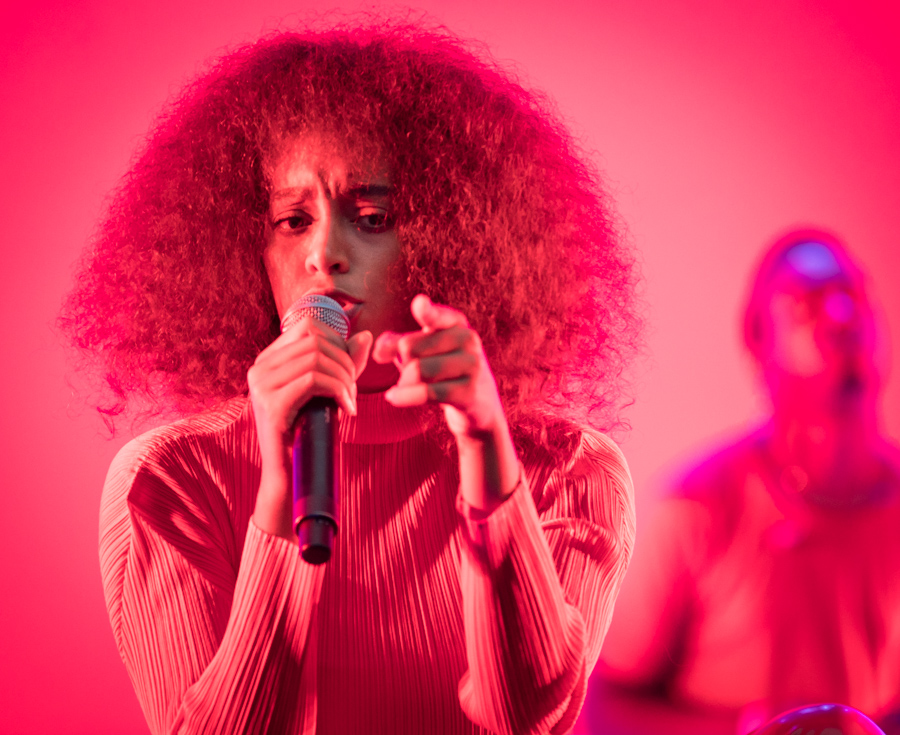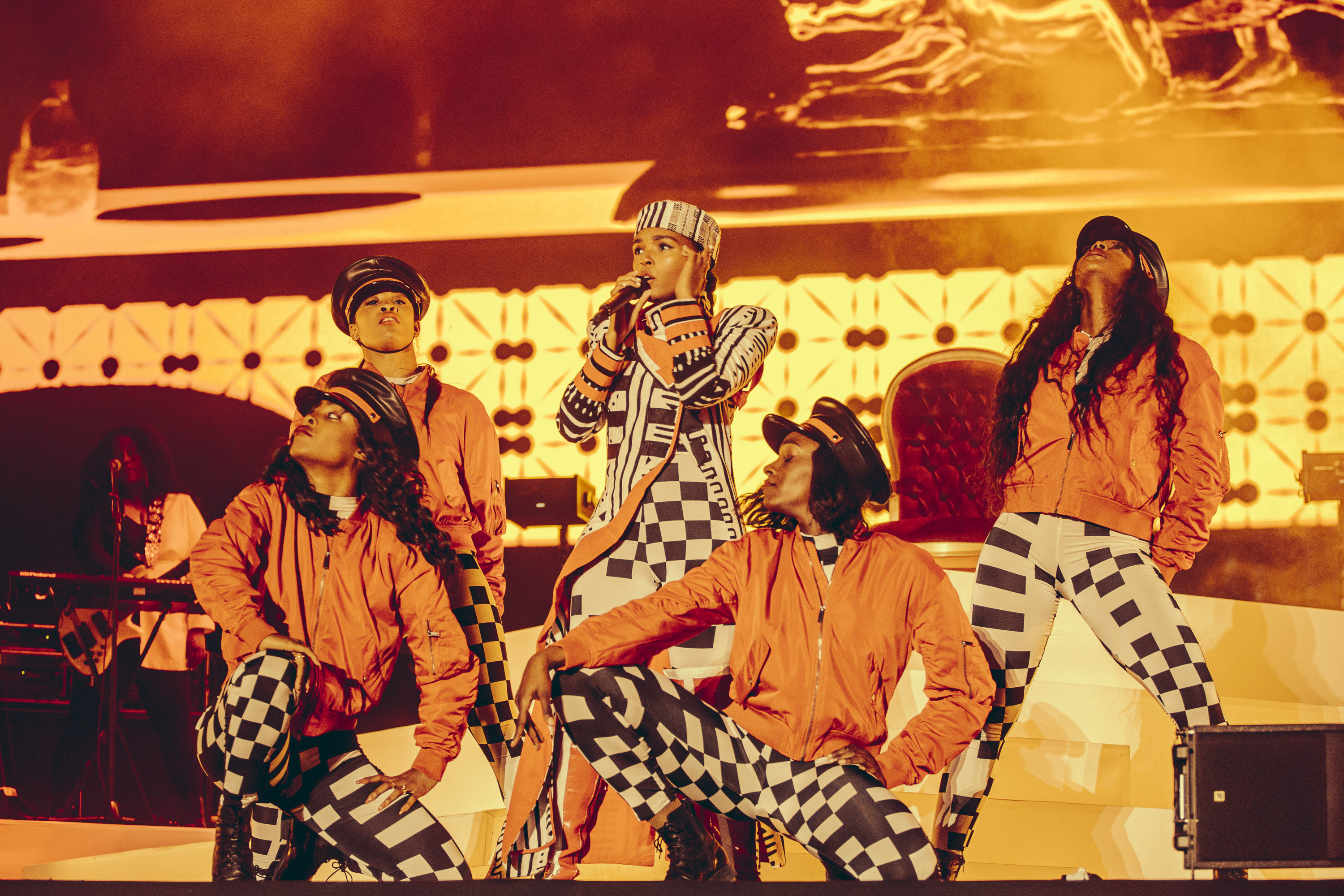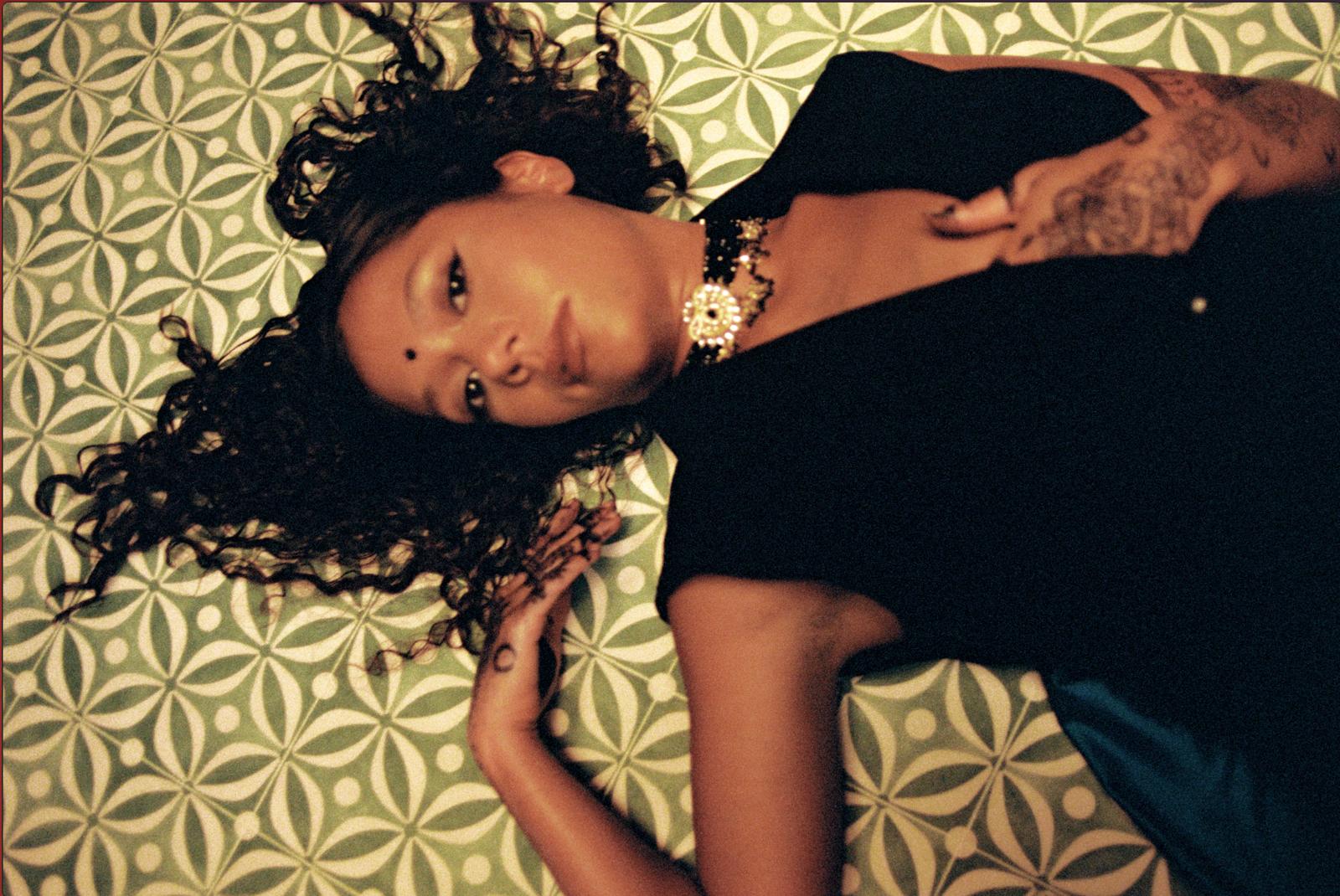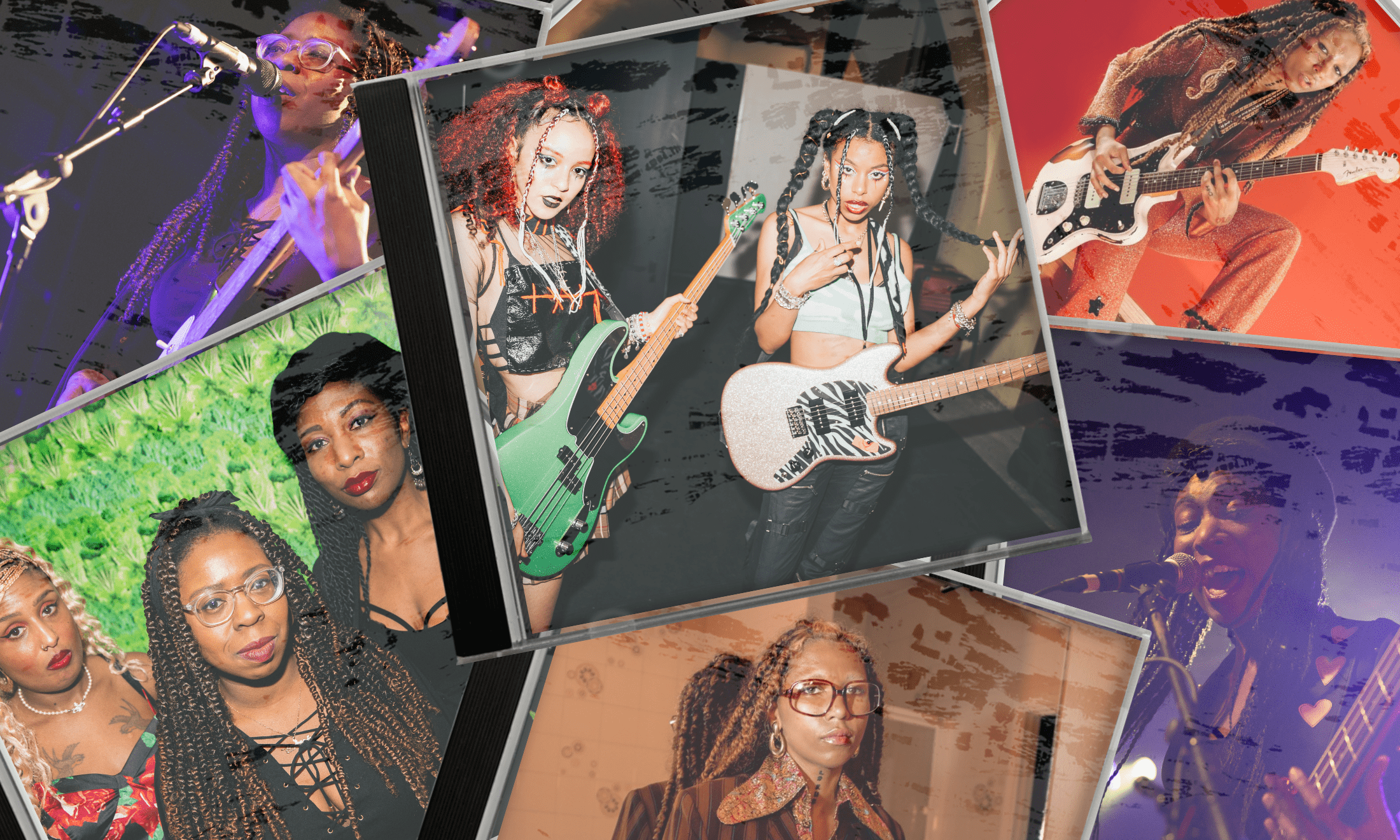‘Don’t bite the hand’ – how Solange faced the microaggressions of 2010s indie
In an edited extract from Stephanie Phillips’ forthcoming book, Why Solange Matters, the author and musician considers how Solange flipped the narrative the indie world tried to place on her.
Steph Phillips
05 May 2021
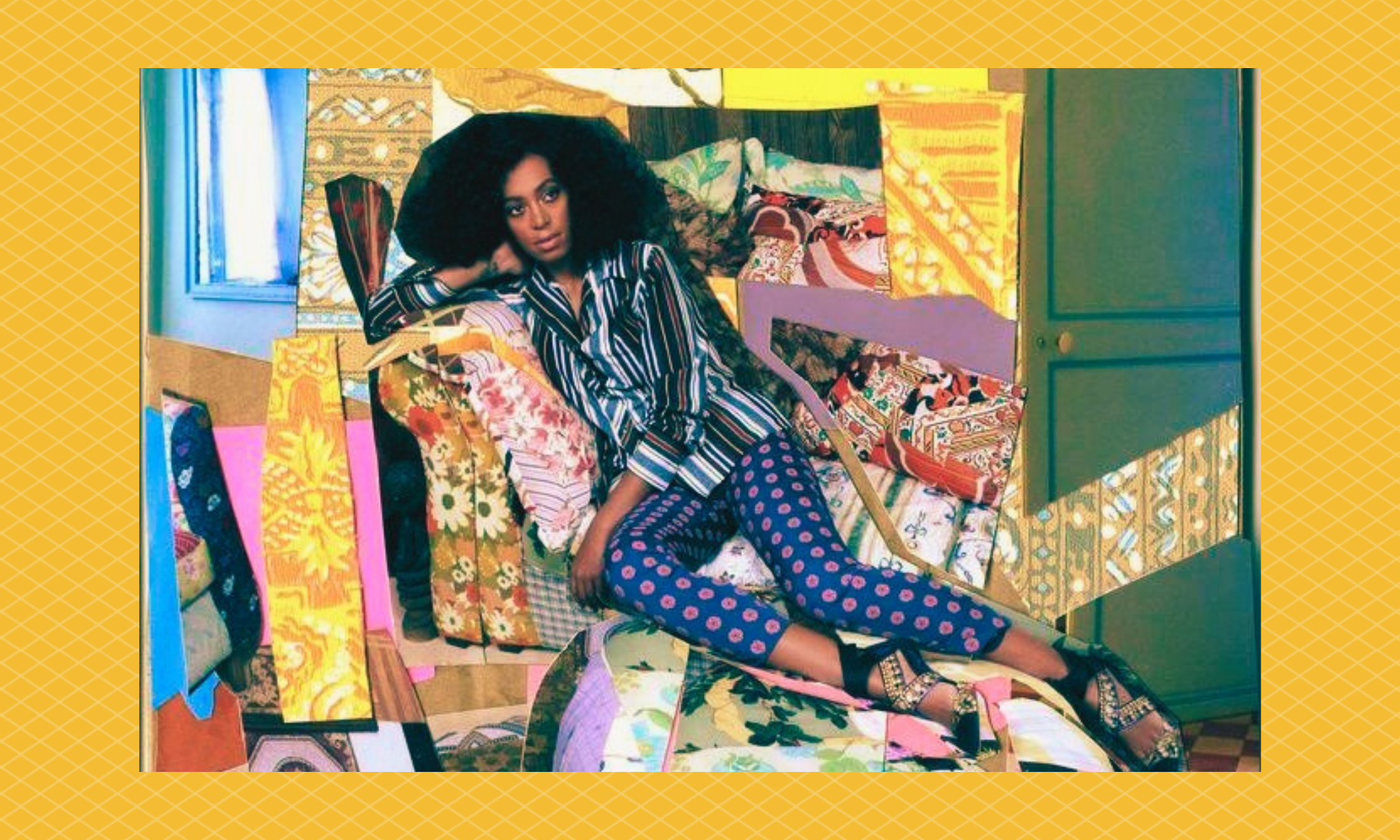
Limited edition artwork for True (Terrible Records, 2012) by Mickalene Thomas
Post Sol-Angel and the Hadley St. Dreams, Solange was left without a label or a direction. Her album was a composite of the music she loved, but still she felt she had hit a glass ceiling in her attempt to communicate her style to a wider audience. Still, with a sense of acceptance from a fan base she loved, she ventured further and further beyond the R&B scene on a journey that would take her to the ironically cool world of the hipsters who ruled Brooklyn indie rock.
The indie rock and punk scenes I experienced in the 2000s were predominantly white, in terms of the people who took up space and were celebrated in the scene. It does not mean there were no people of colour there, but I highlight the fact that many people of colour were often pushed to the sidelines and were rarely on stage. This also does not mean punk or indie rock are genres that are “white” in any way. My own search for belonging through punk led me to the roots of rock’n’roll and showed me that it was the flamboyant, guttural guitar riffs of the gospel performer Sister Rosetta Tharpe that inspired the hip-swaying allure of Elvis and the pioneering brash guitar licks of Chuck Berry, and laid the seeds for the greatest innovations in guitar-based music.
“The whiteness of indie rock matters because the participants’ poor understanding of race and unexamined privilege had a lasting effect on Solange”
The whiteness of indie rock matters because the participants’ poor understanding of race and unexamined privilege had a lasting effect on Solange, and it all started back in August 2009 at a free Grizzly Bear show in Williamsburg, New York. At the gig, onlookers tried to focus on the cerebral indie act but couldn’t keep their eyes on the stage. As they swayed to the band’s haunting rhythms, to the side of the stage stood Solange, Beyoncé, and Jay-Z. The blogosphere could barely process the moment. Speaking to Fuse the next day, Jay-Z said: “I enjoy watching [indie rock] now more than hip-hop.” Beyoncé began to seek out high-profile indie artists, collaborating with Chairlift, James Blake and Ezra Koenig from Vampire Weekend. Overnight, Solange became one of the most powerful influencers of the era.
News quickly reached the London punk scene, in which I had recently made my home, and no one was more excited about Beyoncé interacting with indie rock than the punks. Friends would run up to me, barely containing their delusional elation that perhaps Beyoncé would make an indie song.
It reminded me of the Black best friend trope in film – you know, the one devoted to the white star, but who is strangely never focused on their own problems. White scenesters wanted to experience Blackness vicariously, using Black artists as positivity cheerleaders to boost them in their lowest moments. It seems the indie world is always ready for a new Black soul diva to leach from. Back in 2009, it looked like Beyoncé might play that role, but she had the power to bring the indie world to her, so Solange quickly became the replacement. As a result, she experienced the same microaggressions, barely concealed racism, and ignorant remarks as other Black people in the punk and indie rock scene, including me.
Could Solange ever truly cross over into indie? The question rattled around in various insidious guises as review after review noted her hipster stance, unusual style choices, and R&B background. Yet no one thought to ask whether Solange wanted to be seen as an indie star. The answer to that question was no, a stance she was open about from the beginning. Speaking to Village Voice back in 2010, Solange said: “They’re like, ‘Are you going to be this indie-pop girl and be there with your guitar?’ And I’m like, ‘Hell to the nah!’ […] I left a major label because I didn’t like the way it felt to be on one and now I want to be an independent artist. But I don’t want this façade of me diving into the indie scene – there’s not a conscious effort to that at all.”
As a lifelong music nerd, Solange was merely connecting the threads that linked various genres to find the common ground ripe for experimentation. Ironically, it was the same method that brought praise to the feet of her white indie peers, who made a name with their takes on R&B inverted beats. Solange’s motives were questioned and overanalysed rather than accepted as proof of her skill as an experimental musician. Many wondered if it was part of a plot to stand out from the shadow of her sister. Though the indie scene and her bohemian, “it girl” lifestyle gave her much more freedom than her time as a major label artist had, being independent brought its own set of challenges.
“Despite her achievements, Solange was seen as the kooky Black girl who played white music”
Despite her achievements, Solange was seen as the kooky Black girl who played white music. Her trendy life in Brooklyn led to her becoming an in-demand DJ for exclusive events. Though she sought training from hip-hop pioneer Q-Tip, beat matching for hours on end until she mastered the skill, the terms “DJ” and “hipster” were often thrown at her as slurs. In an interview with Hot 97, one of New York’s leading hip-hop radio stations, DJ Rosenberg jokingly referred to Solange as a “Brooklyn hipster.”
In this use of the word, “hipster” is seen as separate from Black culture. It is connected to white artists, money, and class status. It says you’ve lost Black points because you spent X amount of time in this arena. Given collaborator Dev Hynes’ and Solange’s statuses (hers, a wealthy, well-connected young Black woman; his, a Black British artist already known for his genre-traversing past), the pair were ripe for ridicule from those who saw them as just trying to be different. During this time, the term “Blipster” (a black hipster) was thrown at any Black person who dared to wear their jeans too tight or sport Day-Glo graphic tees. Black people who rocked flat-brimmed hats and snug pants in the music industry were derided as PBR&B – PBR standing for Pabst Blue Ribbon, a beer associated with hipster culture in the United States.
At the time, True was lumped in this amorphous grouping. The term was lazily coined (by the creator’s own admission) by the music journalist Eric Harvey, who tweeted the sly dig at The Weeknd, electronic act How to Dress Well and Frank Ocean. As Harvey later reflected in an article for Pitchfork, the term was reductive for many reasons: “I cobbled together three artists who were doing drastically different things, more or less because they were making music that had the capacity to ‘cross over’ […] it’s music rooted in African American traditions that . . . well, to put it bluntly, might sell to young white people for whom other types of more rhythm-focused or bluesy modern R&B might not.”
What I find most unusual about “PBR&B” is that as a term it racialises not just the artists associated with it but also, as Harvey states, the assumed audience. The backlash Black alternative kids receive suggests that society had not yet caught up to the reality that as a generation raised on dial-up internet (as I was), Black artists were well equipped to sift through their multigenre collection of Napster downloaded mp3s to produce a sound that reflected their lives.
Solange’s new connection with the indie scene was seen as her saving grace. Reporting for the Village Voice, the journalist Stelios Phili boldly asked Solange: “You had everyone from Timbaland to Jermaine Dupri producing your debut, Solo Star. Do you look back on that record and go, ‘Wow, what was I thinking?’” Solange, with her intellect, vast musical knowledge, and pride, was disappointed that so many music journalists couldn’t keep up with her. In a 2013 Twitter thread, she said music blogs should employ people who understood the history of hip-hop to write about the genre. She demanded that journalists learn deep cuts from Brandy’s records if they wanted to appropriately cover R&B albums. Seeing the term “deep cuts” – a phrase most often used in reference to obscure tracks by canonical white male rock stars – used to describe a Black woman’s music tickled many journalists, who laughed off Solange’s statement.
“The New York Times writer Jon Caramanica suggested that Solange’s popularity was a result of her association with indie acts like Grizzly Bear […] He added that she should be worried about ‘not biting the hand that feeds you'”
The ridicule steadily increased. In 2013, on a New York Times podcast debating white journalists’ role in documenting Black culture, Solange’s tweets were mentioned. In response, the writer Jon Caramanica suggested that Solange’s popularity was a result of her association with indie acts like Grizzly Bear. “I saw her in concert this year,” Caramanica said, “and I felt like a better person when I left the show, but the only reason Solange’s success, quote unquote, over the past year has even been a thing is because of the same people she’s lambasting. There would be no Solange record if the dude from Grizzly Bear did not put it out. There would be no Solange interest if all of a sudden the people who have historically not been interested in R&B hadn’t decided to pay attention to Miguel, The Weeknd, and Drake.” He added that Solange should be worried about “not biting the hand that feeds you.”
Caramanica’s statements insinuated that as a Black woman, Solange needed to refrain from speaking up about the racial disparities she saw unraveling around her if she wanted to please the white people she supposedly needed to keep her career going. The comment hit Solange hard. It stayed with her for years until she finally opened up during her 2016 press tour for A Seat at the Table, revealing that moment as the inspiration behind the song ‘Don’t You Wait.’ In the album liner notes, two whole pages are devoted to the single phrase “bite the hand” as a warning that she won’t be silencing herself anytime soon. Speaking about that moment, Solange said: “One of the things that I’ve explained to the journalist, who has since apologised, was that by him stating that Grizzly Bear made me, who are friends of mine and awesome people and an awesome band, he was being extremely reductive to a lot of people who supported me before True, who were young Black people. What he was basically trying to say is that even though Sol-Angel and the Hadley St. Dreams actually reached more people from a numerical point of view than True, I am only relevant to him because the people who he aligns himself with are saying that I’m relevant.”
Caramanica’s comment was representative of the microaggressions Solange and other people of colour in the indie rock scene have to endure. It is a system designed to keep you in your place, that says you’re lucky to have white people love your music, as if the number of white listeners can be a marker for good taste. It kept Black creatives down-trodden and ignores the racism in the scene. This bigotry dressed up in progressive clothing started to eat at me, too. How many times could I be mistaken for the other Black girl in the bar? How many times can I be told to be grateful for what I have until I realise I don’t need them and could create something of my own?
“After years of contorting herself to fit into other scenes, Solange realised the only way to fully excel as the artist she longed to be was to create space for herself”
Solange has described her time in the indie scene as traumatic, but it was pivotal for her progression as an artist. After years of contorting herself to fit into other scenes, through her experiences during the True era she realised the only way to fully excel as the artist she longed to be was to create space for herself. She went away and started cultural hub Saint Heron and Saint Records. Her venture would create a new space for up-and-coming artists who were as unconventional as she was. Saint Heron was a success, playing a part in the early careers of Kelela and Sampha. If the white music press wanted to know what biting the hand that feeds them is like, she was going to give it to them.
As Solange was cultivating her Black millennial collective, I was still in London playing in a majority white feminist punk band. I realised my dream was to create a Black punk band and a space for other Black punks – Big Joanie and Decolonise Fest, respectively. It’s a strange coincidence, but we both decided, “fuck this life” and started something new.
The seeds of our future lay in our hands. All we had to do was cultivate them, nurture them, and reclaim what was rightfully ours.
This edited extract was taken from Stephanie Phillips’ Why Solange Matters, out 6 May 2021 on Faber and Faber. You can buy a signed copy of the book from Rough Trade.

